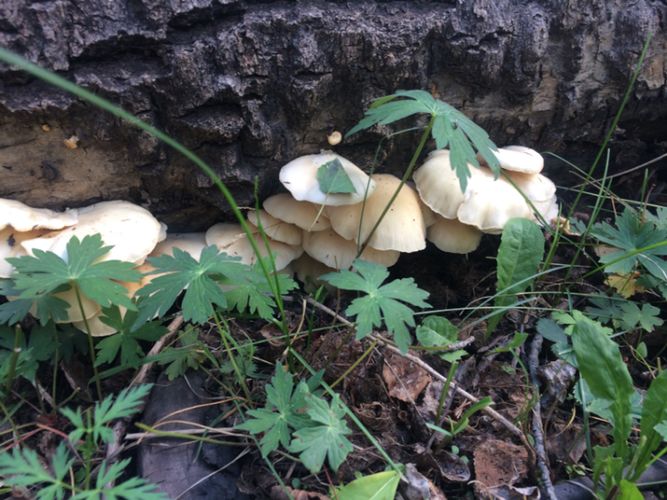You may have heard of using the mint Lemon Balm (Melissa officinalis) for preventing and treating cold sores. And it’s great. We know it’s helpful from a long history of traditional use as well as from research studies. But Lemon Balm’s not the only game in town.
First, a bit more on herpes simplex virus (HSV), the cause of cold sores. There are two HSVs. HSV-1 is predominantly responsible for oral lesions, but sometimes can cause genital outbreaks. HSV-2 is usually the cause for genital infection but can sometimes cause oral outbreaks. Once infected with either virus, it’s there for life—mostly laying low in nerve bundles until stress, suppressed immunity, hormonal changes, or other triggers induce a flare-up. HSV is very contagious, and it can spread even when there aren’t any lesions.
Over 60% of adults in the US have antibodies to HSV-1, indicating exposure to the virus, and resistance of both HSV-1 and -2 to commonly used antiviral drugs such as acyclovir is growing. So, having an additional approach to dealing with herpes viruses is important.
On that note, here are additional helpful botanicals based on tradition and science…
St. John’s Wort (Hypericum perforatum)
Many people are familiar with St. John’s Wort (Hypericum perforatum) for mood. But it’s also an anti-viral herb and has traditionally been used for cold sores, both topically and internally. It’s considered specific for viral infection of the nerves. It, like lemon balm, can be used as an orally-dosed tonic to reduce the frequency and severity of herpes outbreaks and can also be used topically at the first sign of a flare-up (1): Burning, tingling or itching around the mouth. St. John’s Wort pairs well with Lemon Balm for both internal and topical use. St. John’s Wort is also used for nerve inflammation and pain, while inhibiting HSV replication (1). Avoid standardized SJW extracts if applying topically.
Lavender (Lavandula species)
Lavender is a wonderful pain-relieving herb that’s particularly useful for nerve pain induced by viral infection. I’ve used it in a cream for shingles…a painful outbreak caused by varicella zoster virus, the herpes virus that also causes chicken pox. Lavender works well when used at the first sign of an outbreak and is also just fine if used by itself.
A study found that a Lavender-based cream (particular species not indicated) was more effective than acyclovir and placebo in reducing pain, lesion size and time to healing (2). Lavender, like many mints, has notable antiviral effects and is also a vulnerary (tissue healing) herb.
Many other mints beyond Lavender and Lemon Balm have effects against HSV, including Rosemary, Sage, Basil, Self Heal, Peppermint and Thyme (3). Any of these would be great in an internal formula or could be used topically. If using Thyme topically, use plant preparations but not the purified essential oil, which is a skin irritant.
Milky Oat Tops (Avena sativa, Avena fatua)
Oats are a traditional remedy for most things nerve-related. How many of you had chicken pox as a kid and were plunked into an oatmeal bath?
Herbalists often turn to oats for nerve pain, and research shows that components of oats, called β-glucans, may decrease the risk of HSV-1 infection (4). Fresh Oat Tops are the most effective form to use. These are the fat green seed at the stage where they secrete a milky white sap. These are used as a liquid extract that can be taken internally and applied topically.
Oyster Mushrooms (Pleurotus species)
Oyster mushrooms strengthen our resistance to HSV infection by bolstering the immune system, which may help suppress outbreaks. Oyster mushrooms may even have direct antiviral activity against both HSV-1 (5) and HSV-2 (6). This was shown in cell culture and doesn’t necessarily reflect what would happen with ingested oyster mushroom—though cell culture results may indicate efficacy as a topical preparation.
Other edible and medicinal mushrooms, such as Shiitake (Lentinula edodes)(5, 7), also have anti-HSV activity. Shiitake may prevent viral assembly and exit from the host cell (7). (Viruses can’t live independently, they rely on getting inside of a cell and using cellular machinery to build copies of itself, that then leave the host cell and spread to other cells).
Herbalists will often use a blend of botanicals such as those discussed here to deal with cold sores…one formula to take long term as a tonic and one to apply topically, either as a liquid, cream or lip balm. For lip balms, use those in a tin rather than those in stick form. A stick that’s used could possibly spread the virus, while using a clean finger to apply balm (or cream) from a tin or other container should not contribute to spread.
This information is not a substitute for medical advice. Please consult your health care provider before beginning any new regimen. aAny information relating to specific medical conditions, health care, preventive care, and healthy lifestyles, is presented for general informational purposes only.
References
1) Wölfle, U, et al (2014) Topical application of St. John’s Wort (Hypericum perforatum). Planta Med. 80:109-20.
2) Altaei, T, et al (2012) Topical treatment of herpes simplex lesion by lavender cream. J Bagh College Dentistry. 24 (Special Issue 1): 70-6.
3) Yarnell, E, et al (2009) Herbs for Herpes Simplex Infections. Altern Complement Ther. 15(2):69-74.
4) Murphy, EA, et al (2012) Effects of oat β-glucan on the macrophage cytokine response to herpes simplex virus 1 infection in vitro. J Interferon Cytokine Res. 32(8):362-7.
5) Santoyo-Ana, S, et al (2012) Antiviral activities of Boletus edulis, Pleurotus ostreatus and Lentinus edodes extracts and polysaccharide fractions against Herpes simplex virus type 1. J Food Nutr Res. 51(4):225–235.
6) Krupodorova, T, et al (2014) Antiviral activity of Basidiomycete mycelia against influenza type A (serotype H1N1) and herpes simplex virus type 2 in cell culture. Virolog Sinica. 29 (5): 284-290.
7) Sarkar, S, et al (1993) Antiviral effect of the extract of culture medium of Lentinus edodes mycelia on the replication of herpes simplex virus type 1. Antiviral Res. 20(4):293-303.













